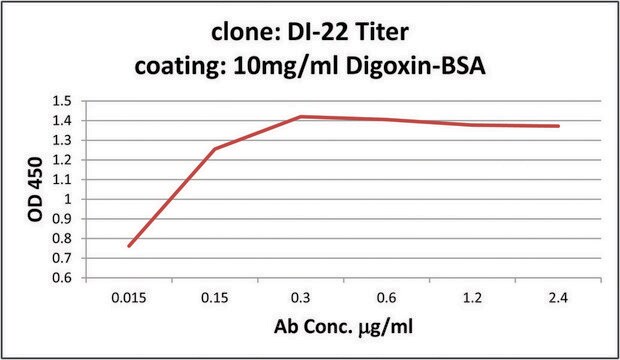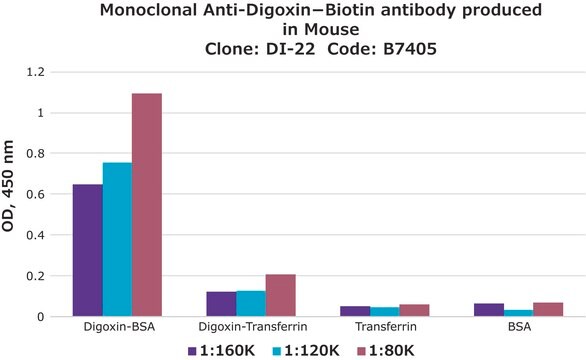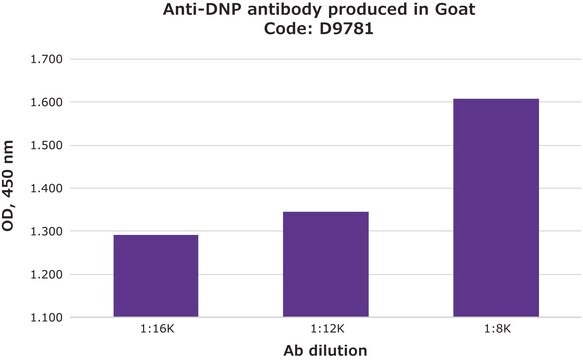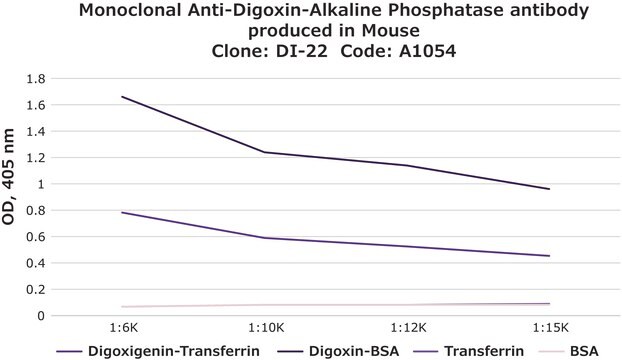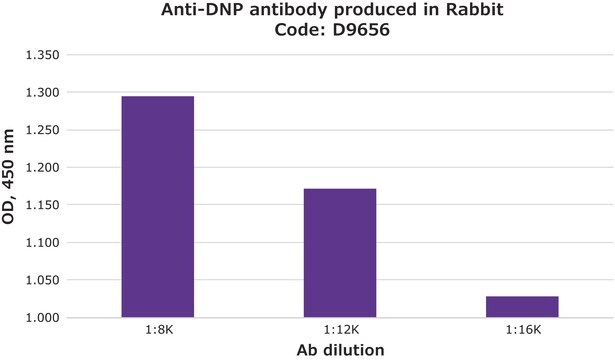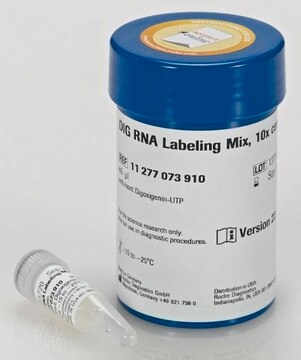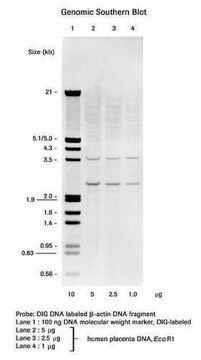D8156
Monoclonal Anti-Digoxin antibody produced in mouse
clone DI-22, ascites fluid
Synonym(s):
Monoclonal Anti-Digoxin
About This Item
Recommended Products
biological source
mouse
Quality Level
conjugate
unconjugated
antibody form
ascites fluid
antibody product type
primary antibodies
clone
DI-22, monoclonal
contains
15 mM sodium azide
technique(s)
dot blot: suitable
flow cytometry: suitable
indirect ELISA: 1:10,000 using digoxin-BSA
indirect ELISA: 1:2,500 using digoxigenin-transferrin
isotype
IgG1
shipped in
dry ice
storage temp.
−20°C
target post-translational modification
unmodified
Looking for similar products? Visit Product Comparison Guide
General description
Specificity
Immunogen
Application
- enzyme-linked immunosorbent assay (ELISA)
- dot blot
- flow cytometry
- fluorescence in situ hybridization (FISH)
- DNA hybridization
- in-situ hybridization (ISH)
- immunodetection of the probe and chromosome X
Biochem/physiol Actions
Disclaimer
Not finding the right product?
Try our Product Selector Tool.
Storage Class Code
12 - Non Combustible Liquids
WGK
nwg
Flash Point(F)
Not applicable
Flash Point(C)
Not applicable
Choose from one of the most recent versions:
Already Own This Product?
Find documentation for the products that you have recently purchased in the Document Library.
Customers Also Viewed
Our team of scientists has experience in all areas of research including Life Science, Material Science, Chemical Synthesis, Chromatography, Analytical and many others.
Contact Technical Service